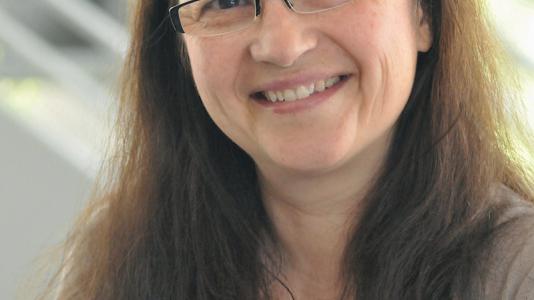
NANOSCIENCE
Tijana Rajh, nanoscientist
“Up until now, nanoscience has been exploring relatively simple structures. Now we’re finally at the point where we have the background knowledge to build more complex structures.
I look at nature for inspiration here. Nature is good at adapting and reproduction. It’s not good at longevity. Individual cells die all the time; your body just makes new ones. Right now it’s too energetically expensive for us to do that in artificial systems. We need to master reproduction, and adaptation. How can we think about making it easier to repair individual units in artificial systems? We saw hints on how to approach adaptation and repair when we worked with batteries that were spontaneously adapting with cycling. Nature’s also good at sensing and communication between units; can we do that?
In many ways we are just now getting to the true potential of nanoscience. What if we made things malleable, that change colors, or that bend light around themselves so that they are invisible to our eye? That’s what inspires us.”
MICROBIAL ECOLOGY
Jarrad Hampton-Marcell, microbe researcher
“Microbial ecology—the study of the microbe populations living in and around us—is evolving so quickly that this is a really interesting question. The DNA sequencers from ten years ago look like dinosaurs. A reach used to be 10 million units of data. Now we go through that in a day. In 50 years, maybe we could get a sample and analyze it—that is, identify all the species of microbes and sequence their DNA—in hours or days rather than weeks or months. That would make possible all kinds of things. We could expand study sizes. A lot of studies right now are like 30 people. We could really get into understanding how species interact, how to make better spaces and quality of life, how to predict the best drug treatments for an individual.
A field moving so fast is definitely a challenge. But it’s also very exciting. Anyone could uncover new things at any time.”
HIGH-ENERGY PHYSICS
Jeremy Love, high-energy physicist
“The timescales of our projects in high energy physics are different from most other fields: the Large Hadron Collider, where I work, started taking data in 2009 and will run until 2035, but it was first proposed back in 1984. The timescales for these experiments are growing, too: we’re already in discussions on the next collider, which might be as much as a factor of 10 more powerful and would start delivering data in perhaps 2045. But as we start to reach the limits of our accelerators, people are starting to look increasingly at other sources of high energy particles, like cosmic rays, to study the highest-energy interactions.
I suspect that will all still be the case in 50 years, unless—and this is my hope– we find something that completely defies the Standard Model at the Large Hadron Collider, and then we’ll be investigating that. My personal opinion is that there’s something beyond the Standard Model, but right now we have no clues what that is.”
SUPERCOMPUTING
Katherine Riley, Director of Science at the Argonne Leadership Computing Facility
“The move to get to exascale supercomputers—two orders of magnitude more powerful than we have now—is underway now and it will be very different from what we had to do to make the last leap. Hardware and software will be changing; in 50 years, the way we ask a question of a computer might be very different. Right now it’s linear: you write an application, run a simulation, analyze the generated data. That process could take months, maybe years. What if you could ask a question and get an answer in a day when it normally takes months?
50 years ago, we were using punch cards to program a computer. Perhaps in 50 years spending months writing code might seem as foreign as organizing hundreds to thousands of punch cards.”
Argonne National Laboratory seeks solutions to pressing national problems in science and technology. The nation’s first national laboratory, Argonne conducts leading-edge basic and applied scientific research in virtually every scientific discipline. Argonne researchers work closely with researchers from hundreds of companies, universities, and federal, state and municipal agencies to help them solve their specific problems, advance America’s scientific leadership and prepare the nation for a better future. With employees from more than 60 nations, Argonne is managed by UChicago Argonne, LLC for the U.S. Department of Energy’s Office of Science.
The U.S. Department of Energy’s Office of Science is the single largest supporter of basic research in the physical sciences in the United States and is working to address some of the most pressing challenges of our time. For more information, visit the Office of Science website.